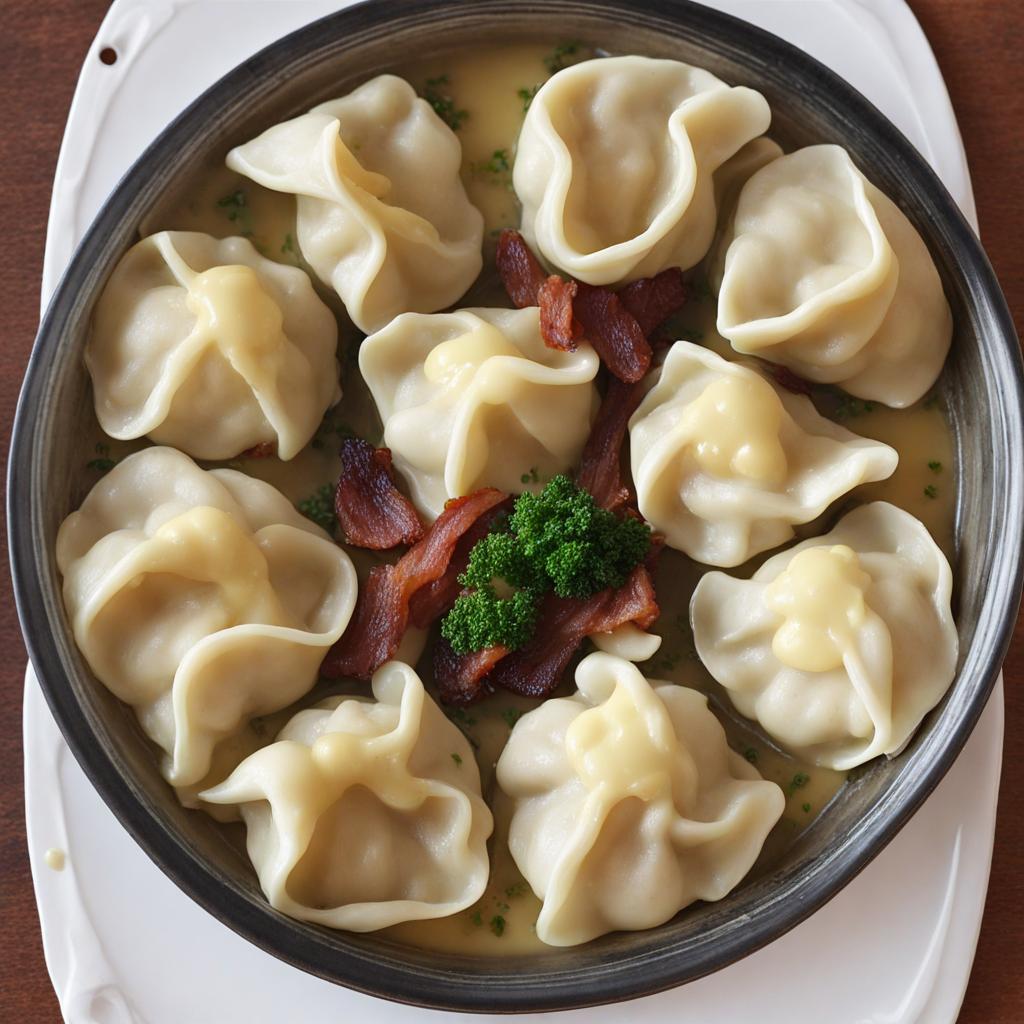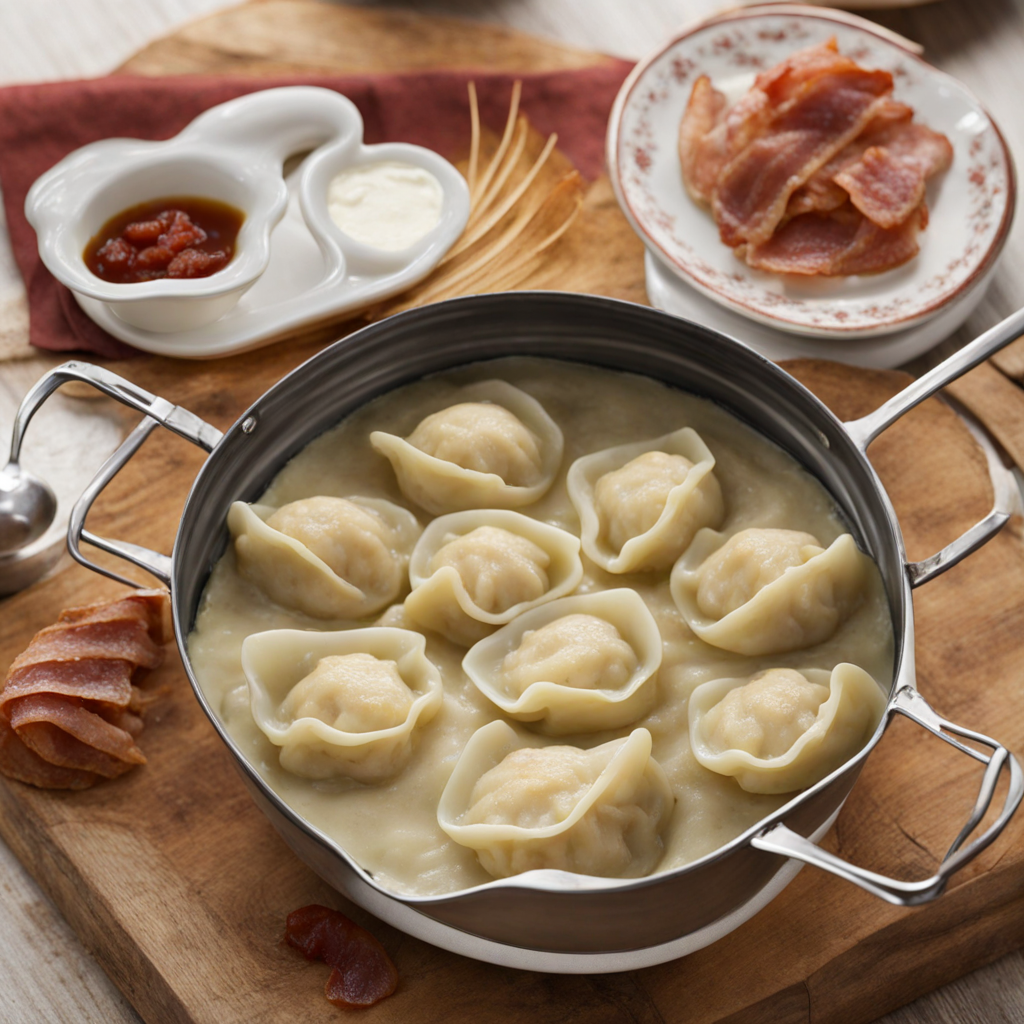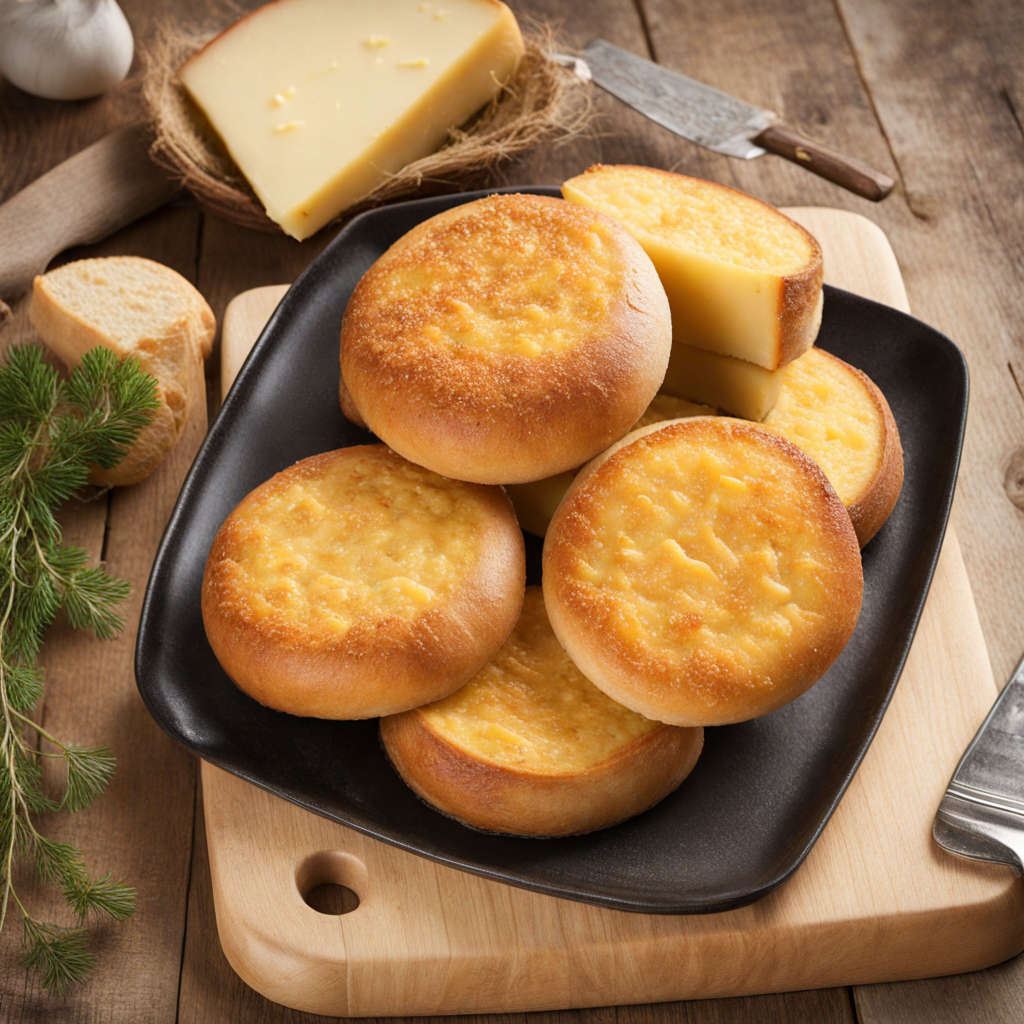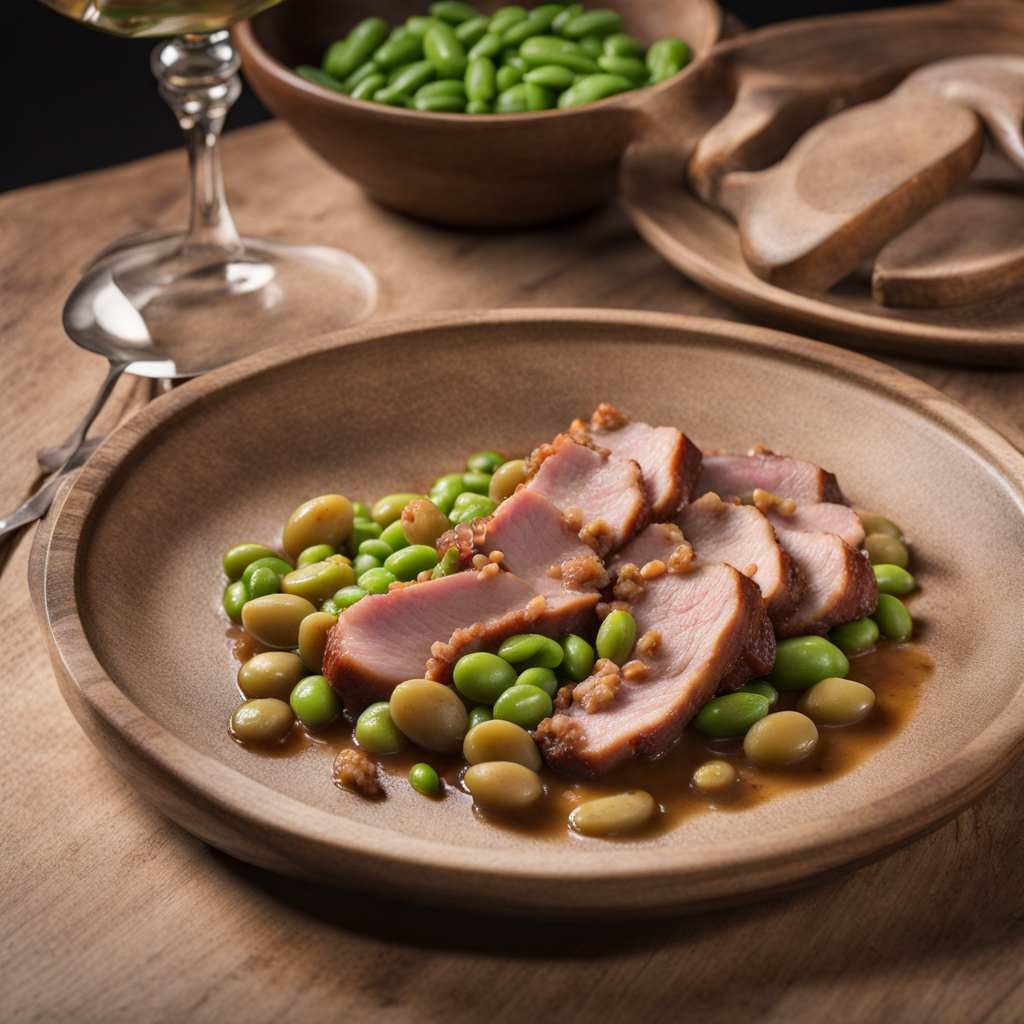Kniddelen
Kniddelen is a traditional Luxembourgish dish that offers a unique and comforting taste experience. These dumplings are made from a simple mixture of flour, eggs, and milk, which creates a soft and fluffy texture. The dough is typically shaped into small oval or round forms and then boiled until they reach a tender consistency. The beauty of Kniddelen lies in its versatility; they can be served as a side dish or a main course, often accompanying rich sauces or stews that enhance their mild flavor. The flavor profile of Kniddelen is subtle yet satisfying, making it a perfect canvas for various toppings and pairings. Commonly, they are enjoyed with a generous helping of gravy, sautéed onions, or even a sprinkle of herbs for added depth. Some variations include incorporating ingredients like cheese or mushrooms into the dough, giving it a more robust flavor. This adaptability allows Kniddelen to cater to diverse palates, appealing to both those who prefer simplicity and those who enjoy more complex flavors. When you take your first bite of Kniddelen, you might be surprised by their comforting, pillowy texture that melts in your mouth. The experience is often complemented by the rich, savory sauces that accompany them, creating a satisfying harmony of flavors. As you explore this delightful dish from Luxembourg, you'll discover not only a new taste but also a glimpse into the country's culinary heritage, making Kniddelen a must-try for any food enthusiast.
How It Became This Dish
The History of Kniddelen: Luxembourg's Culinary Gem Nestled in the heart of Europe, Luxembourg is known for its rich cultural tapestry, which is reflected in its cuisine. One of the most beloved traditional dishes of this small but vibrant nation is Kniddelen. This distinctive dish, often compared to dumplings, has roots that reach deep into the agricultural history and cultural evolution of Luxembourg. To understand Kniddelen is to explore the crossroads of tradition, community, and the evolution of culinary practices in Luxembourg. #### Origins The origins of Kniddelen can be traced back to the rural traditions of Luxembourg, where the agrarian lifestyle necessitated the use of simple, readily available ingredients. The dish is primarily made from flour, water, and sometimes eggs, resulting in a simple dough that is either boiled or steamed. The name "Kniddelen" itself is derived from the Luxembourgish word "kniddelen," which means "to knead." This reflects the fundamental preparation method—kneading the dough to achieve the right consistency. Historically, Kniddelen were a staple food for farmers and laborers. During the late 19th and early 20th centuries, when Luxembourg’s economy was heavily centered on agriculture and industry, Kniddelen served as an affordable source of sustenance. The dish was particularly favored for its versatility; it could be easily paired with various accompaniments, ranging from sauces to meats or vegetables, depending on what was available or in season. #### Cultural Significance Kniddelen holds a significant place in Luxembourgish culture, embodying the themes of simplicity and community. As with many traditional dishes, it is often served during family gatherings, communal meals, and local festivals, reinforcing family bonds and community spirit. The preparation and sharing of Kniddelen can be seen as a communal activity, where families gather to create the dough and cook the dumplings together, passing down the traditions from one generation to the next. In addition to its role in family gatherings, Kniddelen is also an integral part of Luxembourg's culinary identity. The dish symbolizes the fusion of influences from neighboring countries, notably Germany and France, showcasing Luxembourg's unique position as a cultural melting pot. It reflects the adaptability of Luxembourgish cuisine, which often incorporates elements from various European culinary traditions while maintaining its distinct character. #### Development Over Time As Luxembourg transitioned from an agrarian society to a more industrialized nation throughout the 20th century, the preparation and consumption of Kniddelen began to evolve. The post-World War II era brought about significant changes in lifestyles and eating habits. With rising urbanization, the traditional methods of preparing Kniddelen were sometimes replaced by more modern, convenient techniques. However, the dish remained a cherished part of the national identity. In contemporary Luxembourg, Kniddelen are often found on the menus of traditional restaurants and during national celebrations. The dish is typically served with a variety of accompaniments, including a creamy mushroom sauce, bacon, or a simple onion gravy, each reflecting the local flavors and seasonal ingredients. The versatility of Kniddelen has allowed it to adapt to contemporary tastes while still retaining its traditional essence. Moreover, the rise of culinary tourism in Luxembourg has further elevated the status of Kniddelen. As visitors seek authentic experiences, local chefs have embraced the dish, experimenting with innovative presentations and pairings that honor its roots while appealing to modern palates. This trend has not only helped to preserve the traditional recipe but has also introduced Kniddelen to a broader audience, allowing it to be appreciated beyond Luxembourg's borders. #### Kniddelen Beyond Borders In recent years, the increasing globalization of food culture has led to Luxembourg’s culinary traditions being recognized on a larger scale. Kniddelen has made its way into international food festivals and culinary conferences, where chefs and food enthusiasts alike celebrate the simplicity and heartiness of this dish. This interest has fostered a sense of pride among Luxembourgers, who see Kniddelen as a representation of their national heritage. Various adaptations and reinterpretations of Kniddelen have emerged, showcasing the dish's versatility. Chefs have experimented with fillings, incorporating local ingredients like wild herbs, cheese, or even seasonal vegetables, while still respecting the traditional preparation methods. Such innovations demonstrate the dynamic nature of food culture, where tradition meets creativity, resulting in a dish that remains relevant in today’s culinary landscape. #### Conclusion Kniddelen is more than just a dish; it is a symbol of Luxembourg's rich agricultural heritage, cultural identity, and the evolution of its culinary traditions. From its humble beginnings as a peasant food to its place in modern gastronomy, Kniddelen embodies the spirit of community and the importance of food in bringing people together. As Luxembourg continues to embrace its culinary roots while adapting to contemporary influences, Kniddelen remains a beloved staple that connects generations and reflects the nation’s resilience and creativity. Whether enjoyed at a family gathering, a local festival, or a fine dining restaurant, Kniddelen tells the story of Luxembourg—its past, present, and future—one delicious bite at a time.
You may like
Discover local flavors from Luxembourg







